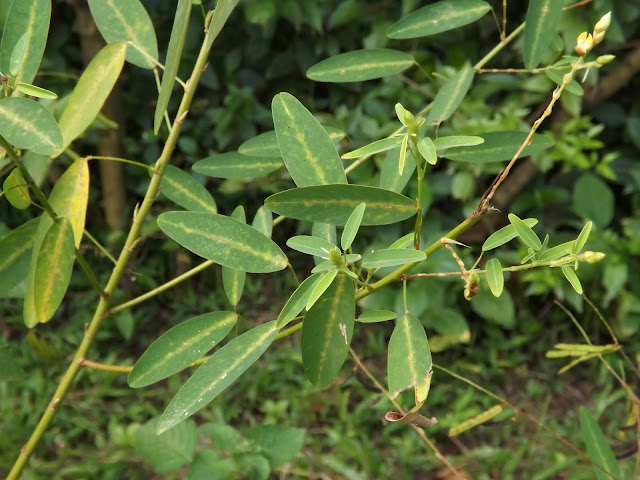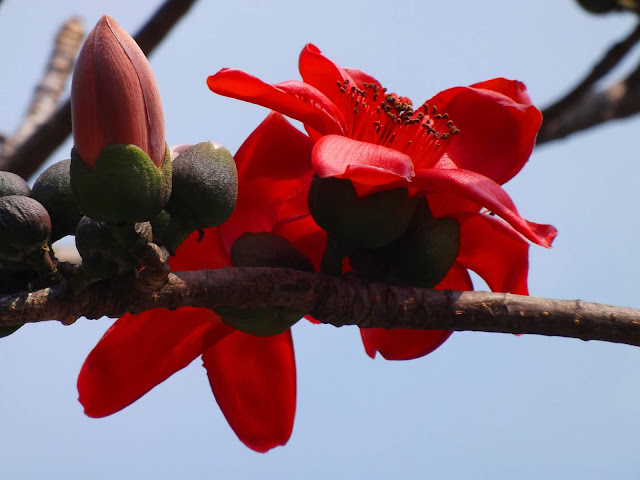Turut chondal or Telegraph plant, Desmodium motorium
Turut chondal or Telegraph plant (Desmodium motorium, family: Fabaceae) is a shrub with branches and attractive leaves, attaining a height of 2 m. It naturally grows in different districts Bangladesh. It is also found in the countries of South and Southeast Asia. Like Lojjaboti (Touch me not), the leaves of the plant can move and that can be seen with the naked eye. Renowned Bengali scientist Jagadish Chandra Bose proved by experimenting on this plant that the plant also has life. Seeing the movement of the leaves, he may have become interested in this research.
Common names : Turuchondal, Turichondal, Bonchondal, Gorachan.
Leaves are pale green, sometimes trifoliate with white shade along the midrib; Treminal leaflet is much longer and thicker than other two, 5-7 cm long and 2-2.5 cm wide. The most notable feature of the plant is that its tiny leaves of each pinna can move. This may be to get more sunlight.
Flowers are pale orange. Thesee bloom in spring (Feb-Mar).
Fruit is a pod, 3-5 cm long, many seeded, dehiscent. The fruits turn black when ripe. Propagation of the plant is caused by seeds.
As an ornamental plant it can be planted in gardens. It needs sunny location for its growth. Traditional village doctors use the plant for making various medicines. It is used in wounds, rheumatism, dysentery, asthma, cough and various kinds of diseases. Part of the plant is used in talisman somewhere.





8EEB89F9B4
ReplyDeleteTakipçi Satın Al
Whiteout Survival Hediye Kodu
Online Oyunlar
Happn Promosyon Kodu
Kaspersky Etkinleştirme Kodu
22972AB8D0
ReplyDeleteGörüntülü Seks
Görüntülü Show
Ücretli Show